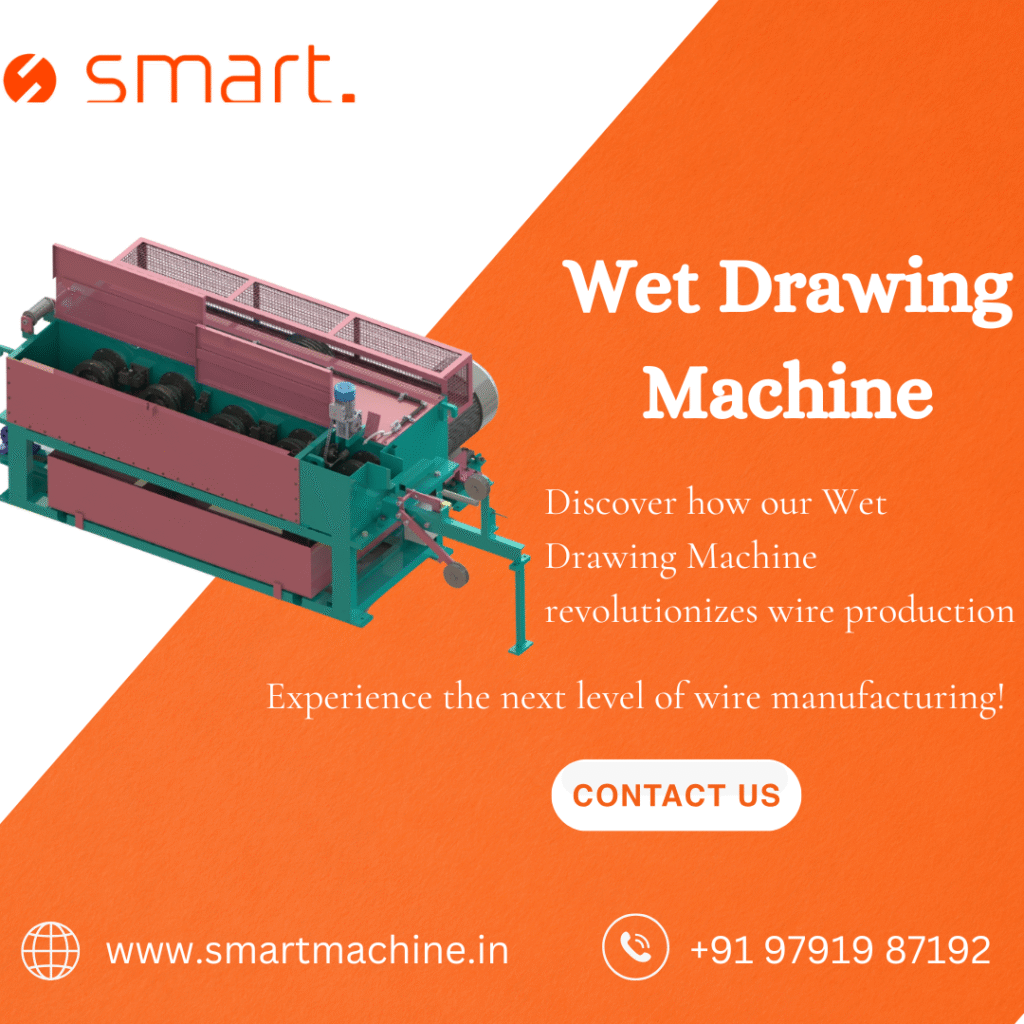In the world of wire manufacturing, the journey from a thick rod to a fine, precise wire is a story of precision, strength, and efficiency. At the heart of this transformation for many high-quality wires is a critical piece of technology: the wet drawing machine.
Unlike its dry counterpart, wet drawing involves pulling the wire through a series of dies that are submerged in a lubricating and cooling fluid. This “wet” process isn’t just a minor variation; it’s a fundamental upgrade that delivers unparalleled benefits for producing fine, high-performance wires. Let’s explore the top advantages that make wet drawing machines indispensable in modern wire production.
1. Superior Surface Finish and Quality
The primary advantage of wet drawing is the exceptional surface quality it imparts on the wire. The liquid lubricant creates a perfect, continuous film between the wire and the die.
- The Result: This minimizes direct metal-to-metal contact, drastically reducing scratching, scoring, and surface imperfections. The finished wire emerges with a bright, smooth, and consistent finish that is highly sought after for applications like electronics, automotive components, and premium cables.
2. Enhanced Die Life and Reduced Tooling Costs
Dies are consumable tools, and their lifespan directly impacts production costs. The constant, efficient lubrication and cooling in a wet drawing machine significantly reduce friction and heat at the die-wire interface.
- The Result: Less friction means less wear and tear on the expensive tungsten carbide or diamond dies. This leads to a dramatically extended die life, lower frequency of die changes, and substantial savings on tooling costs over time.
3. Exceptional Control for Fine and Ultra-Fine Wires
When the target is very fine wire (often down to fractions of a millimeter), precision is non-negotiable. Wet drawing machines are specifically designed for this purpose. The process allows for multiple drafts (reductions in diameter) in a single, continuous pass through a compact machine.
- The Result: Unmatched control over the final wire diameter and tolerances. This makes wet drawing the go-to method for producing the ultra-fine wires essential for sectors like telecommunications, medical devices (e.g., guidewires), and precision springs.

4. Efficient Heat Dissipation for Consistent Properties
The drawing process generates significant heat from friction and plastic deformation. Excessive heat can anneal (soften) the wire inconsistently, alter its mechanical properties, and even damage the dies.
- The Result: The surrounding fluid in a wet drawing tank acts as a highly efficient coolant. It continuously carries heat away, ensuring the wire maintains a stable temperature. This consistent thermal management leads to uniform tensile strength, ductility, and microstructure throughout the entire wire length.
5. Higher Drawing Speeds and Increased Productivity
Because the system is so effective at managing lubrication and heat, it can operate at higher speeds without the risk of wire breakage or surface damage that would plague a dry drawing process.
- The Result: Manufacturers can achieve higher throughput and overall productivity. The continuous, multi-draft nature of the machine means the wire is processed to a fine gauge much faster than with traditional methods.
6. Improved Process Stability and Reduced Breakage
Wire breaks during production are costly, leading to downtime, material waste, and needing to re-thread the machine. The wet drawing process provides a stable, consistent environment that minimizes these risks.
- The Result: The combination of excellent lubrication, cooling, and controlled tension significantly reduces the incidence of wire breaks. This enhances overall line stability, improves yield, and reduces operational headaches.
7. Ideal for a Wide Range of Demanding Materials
While excellent for carbon steel, the wet drawing process is particularly beneficial for drawing non-ferrous metals and special alloys.
- The Result: It is the preferred method for processing materials like:
- Stainless Steel: Prone to work hardening, it benefits immensely from the controlled stress and cooling.
- Copper and Brass: Achieves a brilliant, flawless finish.
- Titanium and Nickel Alloys: These high-strength, temperature-sensitive materials require the precise control that wet drawing provides.
Conclusion: A Clear-Cut Choice for Precision and Quality
While dry drawing machines have their place for larger, heavier-grade wire, the advantages of wet drawing machines for fine and ultra-fine wire are undeniable. From delivering a mirror-like finish and extending tool life to enabling the production of the thinnest, most consistent wires, the “wet” process is a cornerstone of high-value wire manufacturing.
Investing in wet drawing technology isn’t just about buying a machine; it’s about investing in superior product quality, reduced operating costs, and the capability to meet the most demanding market specifications.
Ready to refine your wire production process? Consult with a wet drawing equipment specialist to discover how this technology can elevate your manufacturing capabilities.
